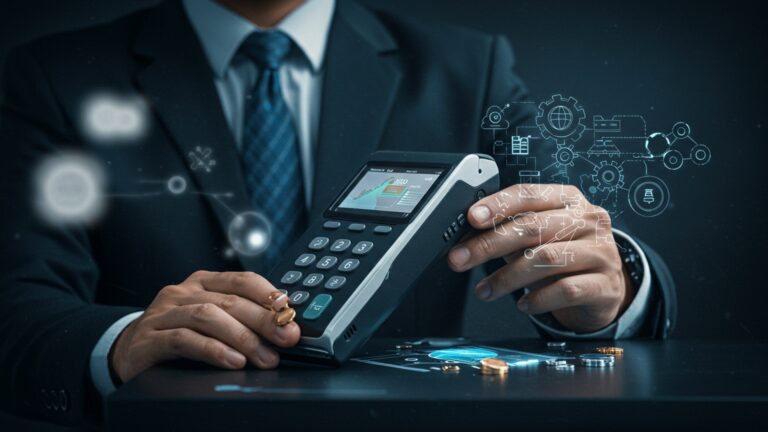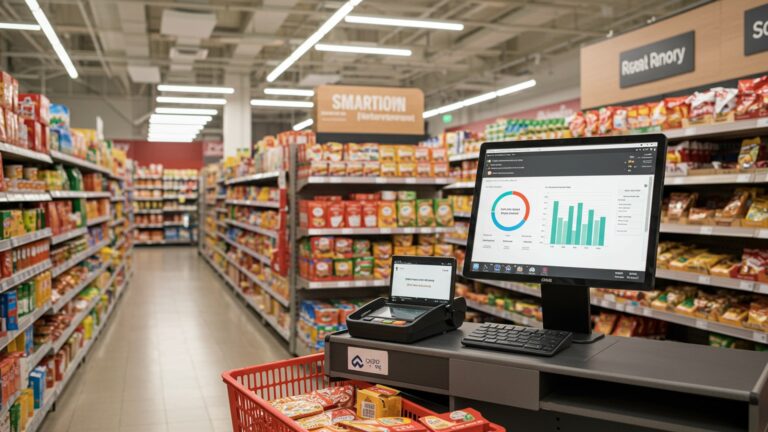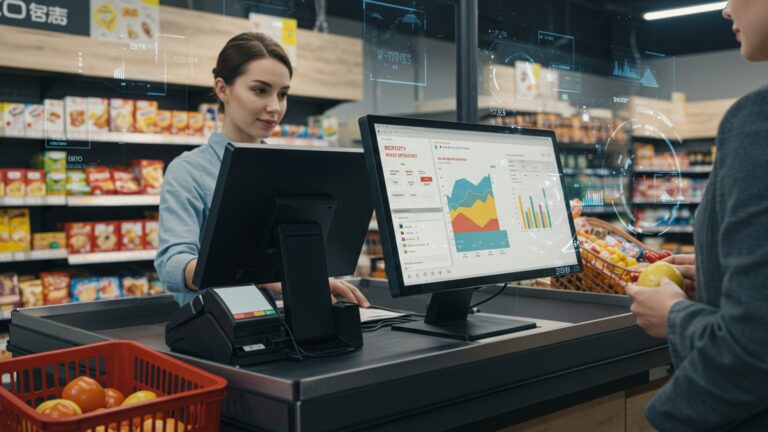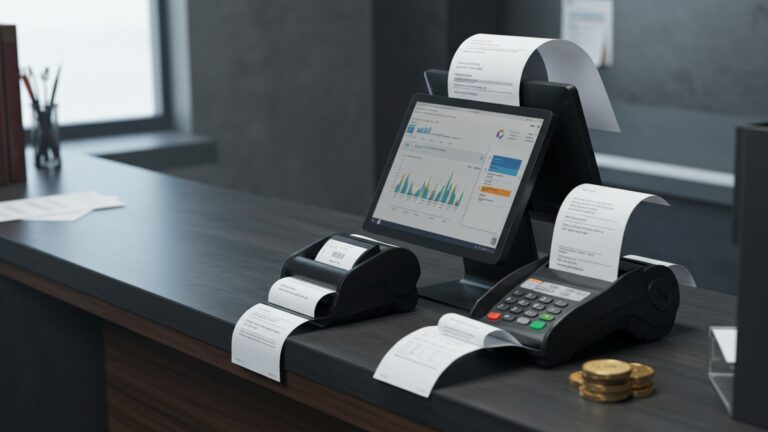Master Mobile POS Software Essential Guide for On-the-Go Business Operations
The modern business landscape demands unparalleled agility, making robust mobile POS software indispensable for operations ranging from bustling food trucks processing QR code payments to field service technicians invoicing on-site. Traditional fixed terminals simply cannot match the flexibility required for today’s dynamic retail environments and pop-up events, where real-time inventory updates and integrated customer relationship management are critical. Recent advancements in cloud-based mobile POS solutions empower businesses with secure, EMV-compliant transaction processing and instant data synchronization, transforming a mere payment tool into a strategic asset for comprehensive sales tracking and operational efficiency, regardless of location. Embrace this pivotal technology to unlock new levels of on-the-go business intelligence.
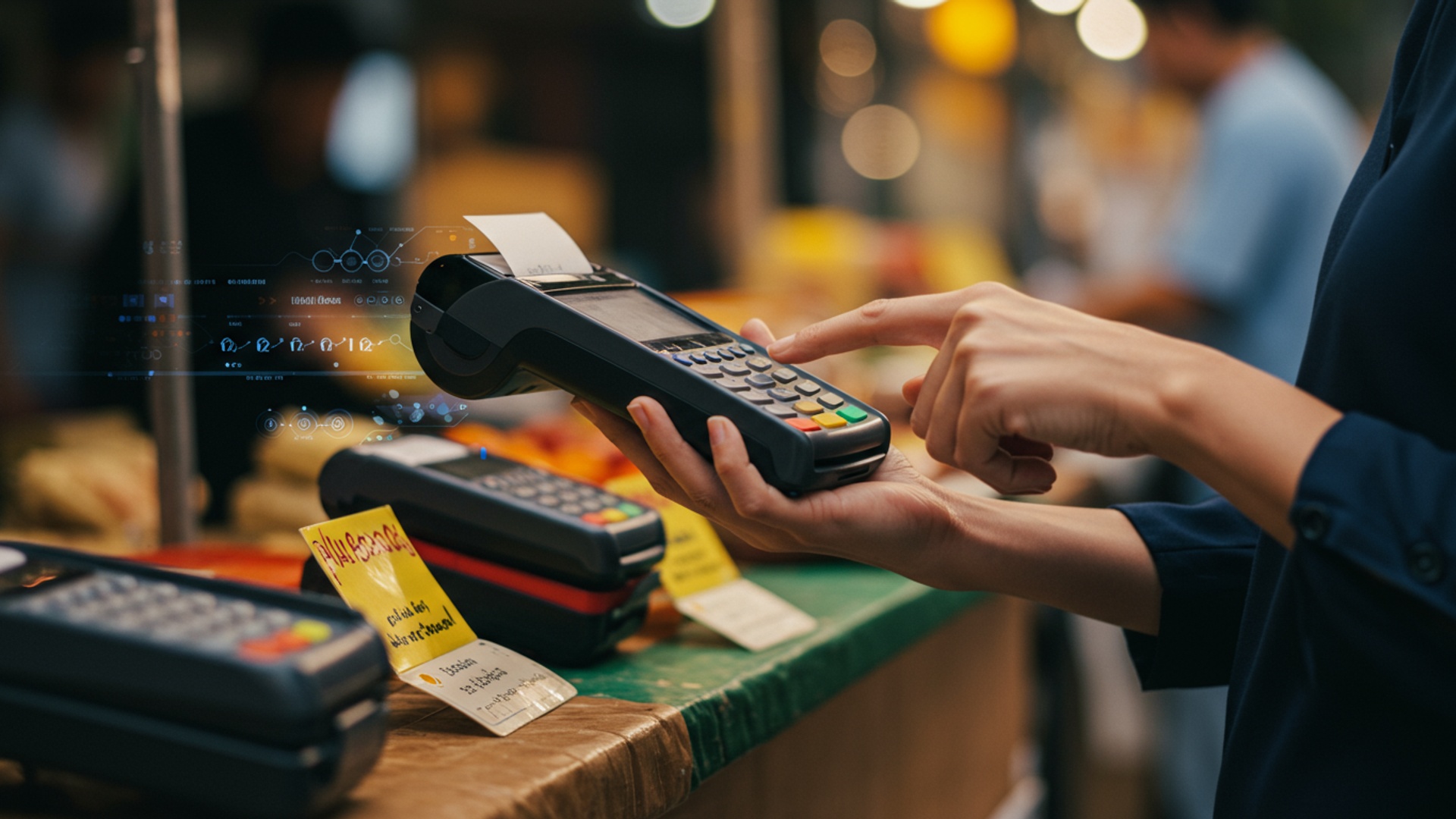
The Evolution of Point-of-Sale: Why Mobile is Essential
The landscape of commercial transactions has undergone a profound transformation, moving from bulky, stationary cash registers to sleek, portable solutions. At the heart of this evolution lies the Point-of-Sale (POS) system. Traditionally, a POS was a fixed terminal – a computer, monitor, cash drawer. printer – typically found at a counter, processing sales and managing inventory. While effective for its time, this setup often tethered businesses to a single location, limiting flexibility and operational agility. The advent of mobile technology, But, has revolutionized this concept, giving rise to the indispensable tool known as mobile POS software.
Mobile POS software represents a paradigm shift, empowering businesses to conduct transactions, manage inventory. access critical sales data from virtually anywhere. This move away from the static counter allows businesses to meet customers where they are, whether that’s on a busy trade show floor, at a pop-up shop, or even within the aisles of a traditional retail store to “bust lines” during peak hours. For the modern entrepreneur, the ability to operate seamlessly on the go is not just a convenience; it’s a competitive necessity.
This essential guide will delve deep into the mechanics, benefits. strategic implementation of mobile POS software, providing you with the knowledge to harness its full potential for your on-the-go business operations.
What Exactly is Mobile POS Software? A Deep Dive
At its core, mobile POS software is an application that runs on portable devices such as smartphones or tablets, transforming them into fully functional cash registers. Unlike traditional POS systems that often rely on dedicated hardware and a fixed internet connection, mobile POS solutions leverage the ubiquity and power of mobile devices, offering unparalleled flexibility.
The system typically comprises two main components:
- Hardware
- Card Readers
- Receipt Printers
- Barcode Scanners
- Cash Drawers
- Software
- Transaction Processing
- Inventory Management
- Customer Management
- Sales Reporting
This includes the mobile device itself (smartphone or tablet), along with peripheral devices that connect wirelessly or via a simple port. Common peripherals include:
Compact devices that attach to the mobile device or connect wirelessly via Bluetooth to accept credit/debit card payments (magstripe, EMV chip, NFC contactless).
Small, portable thermal printers for physical receipts, though many mobile POS software solutions offer email or SMS receipt options.
Often integrated into the mobile device’s camera or connected as a separate Bluetooth accessory for quick inventory lookup and sale.
While less common for truly mobile operations, some setups can integrate with a compact, electronically controlled cash drawer for cash transactions.
This is the application installed on the mobile device. It’s the brain of the operation, managing all aspects of the transaction and business operations. Key functionalities typically include:
Recording sales, calculating totals, applying discounts. processing various payment types.
Tracking product stock levels in real-time, managing product details. alerting businesses to low stock.
Storing customer data, tracking purchase history. facilitating loyalty programs.
Generating detailed reports on sales trends, product performance. employee activity.
The fundamental difference from traditional POS lies in its portability and reliance on cloud-based data storage. This means that all sales data, inventory updates. customer insights are typically synced to a central server in the cloud, accessible from any internet-connected device. This cloud-centric approach ensures data security, real-time updates across multiple devices. robust backup capabilities, a significant advantage over older, localized systems.
Key Features and Capabilities of Modern Mobile POS Software
Modern mobile POS software extends far beyond simple transaction processing, offering a suite of powerful features designed to streamline operations and enhance the customer experience. Understanding these capabilities is crucial for selecting the right solution for your business.
- Advanced Payment Processing
- EMV Chip Card Acceptance
- NFC (Near Field Communication) Payments
- Magstripe Swipes
- Digital Wallets & QR Codes
- Split Payments & Tips
- Robust Inventory Management
- Real-time Stock Tracking
- Product Variants
- Low Stock Alerts
- Barcode Scanning Integration
- Purchase Order Management
- Integrated Customer Relationship Management (CRM)
- Customer Profiles
- Loyalty Programs
- Marketing Integrations
- Feedback Collection
- Comprehensive Sales Reporting & Analytics
- Real-time Sales Data
- Product Performance Reports
- Employee Performance Tracking
- Customizable Reports
- Export Capabilities
- Employee Management
- User Permissions
- Time Clock Functionality
- Sales Tracking by Employee
- Multi-Location & Offline Capabilities
- Centralized Management
- Offline Mode
Essential for security, reducing fraud liability.
Supports contactless payments like Apple Pay, Google Pay. other tap-to-pay options.
Still supported for older cards, though becoming less common.
Integration with popular digital payment platforms.
Flexibility for customers to split bills or add gratuity easily.
Know exactly what you have in stock at any given moment, across all locations.
Manage different sizes, colors, or other variations of a single product.
Automated notifications to reorder popular items before they run out.
Quick and accurate item lookup and sale.
Some advanced systems allow creating and tracking purchase orders directly.
Store names, contact info. purchase history.
Implement points-based systems, discounts, or special offers for returning customers.
Connect with email marketing platforms to send targeted promotions.
Gather customer insights at the point of sale.
Monitor daily, weekly, or monthly sales performance from anywhere.
Identify best-selling items and those that underperform.
Monitor individual sales, tips. hours worked.
Tailor reports to specific business needs, focusing on profit margins, sales by category, or peak sales times.
Easily export data for accounting or further analysis.
Assign different access levels to staff based on their roles.
Track employee clock-ins and outs directly through the system.
Monitor individual staff performance and commissions.
Manage inventory, employees. reports for multiple locations from a single dashboard.
Continue processing sales even without an internet connection, with data syncing automatically once connectivity is restored. This is a critical feature for mobile operations in areas with spotty Wi-Fi or cellular service.
Choosing the Right Mobile POS Software: Factors to Consider
Selecting the ideal mobile POS software is a critical decision that can significantly impact your business’s efficiency and growth. Here are key factors to evaluate:
| Factor | Description | Why it Matters for Mobile POS Software |
|---|---|---|
| Compatibility & Integrations | Does it work with your existing hardware (tablets, printers) and software (accounting, e-commerce, CRM)? | Seamless integration prevents data silos and streamlines operations. Ensure it integrates with QuickBooks, Shopify, or other essential tools. |
| Scalability | Can the system grow with your business? Does it support multiple users, locations, or increased transaction volume? | Avoid outgrowing your system quickly. A scalable mobile POS software can support expansion without needing a complete overhaul. |
| Security Features | PCI compliance, data encryption, fraud protection. secure user authentication. | Protecting sensitive customer and business data is paramount. Look for robust security measures, especially for payment processing. |
| Ease of Use (UI/UX) | Is the interface intuitive for you and your staff? How quickly can new employees learn it? | A user-friendly mobile POS software reduces training time, minimizes errors. speeds up transactions, crucial in fast-paced mobile environments. |
| Pricing Model | Subscription fees (monthly/annually), transaction fees, hardware costs. hidden fees. | comprehend the total cost of ownership. Some providers offer tiered plans; others charge per transaction. Compare to find the most cost-effective option for your volume. |
| Customer Support | Availability (24/7, business hours), support channels (phone, email, chat). quality of assistance. | When issues arise (e. g. , a card reader malfunction during a busy event), reliable and responsive support is invaluable to prevent lost sales. |
| Offline Mode Reliability | How robust is its ability to operate without an internet connection and sync data later? | Crucial for businesses operating in areas with unreliable connectivity, such as outdoor markets or remote service locations. Ensure smooth offline operation. |
Real-World Applications and Use Cases
The versatility of mobile POS software makes it an invaluable asset across a diverse range of industries. Its ability to liberate businesses from fixed locations opens up new avenues for sales and customer engagement.
- Food Trucks and Pop-Up Restaurants
- Retail Boutiques and Market Stalls
- Service Businesses (Plumbers, Electricians, Hair Stylists)
- Field Sales and Trade Shows
- Museums, Galleries. Event Ticketing
Imagine a bustling food truck at a music festival. Speed is critical. customers expect modern payment options. A robust mobile POS software allows staff to take orders quickly on a tablet, accept various payment methods (chip, tap, mobile wallet). even send orders directly to a kitchen printer. One food truck owner, Sarah, shared how switching to a mobile POS solution dramatically reduced her line times, leading to a 20% increase in sales during peak hours because customers weren’t deterred by long waits. Her staff can even take orders while customers are still in line, further speeding up service.
For a small clothing boutique, a mobile POS setup means staff can assist customers on the sales floor, look up inventory. complete a sale without ever going to a checkout counter. This personalized service enhances the shopping experience. Similarly, artisans selling handmade goods at farmer’s markets can easily process sales, track inventory. collect customer emails using just a tablet and a card reader. “Before I had mobile POS software,” explains Mark, an artisan woodworker, “I was limited to cash or clunky, expensive credit card terminals. Now, I just use my phone. I’ve seen a clear increase in sales from customers who prefer paying by card.”
Professionals who offer services on-site—like a mobile pet groomer, an electrician, or a personal trainer—can use mobile POS software to invoice clients, accept payments. even schedule future appointments directly after completing a service. This eliminates the need for manual invoicing or chasing payments later, improving cash flow and professionalism. A mobile dog groomer, for instance, can complete a service, present the bill on their tablet. process payment immediately, even printing a receipt on a portable printer.
Companies exhibiting at trade shows or conducting direct sales often need to process orders and payments on the spot. Mobile POS software enables sales representatives to capture leads, showcase products. close deals efficiently. They can look up product availability in real-time, apply show-specific discounts. process payments instantly, providing a seamless experience for potential clients.
Organizations that manage admissions or sell merchandise at events benefit greatly. Staff can use mobile devices to scan tickets, sell new ones, or process gift shop purchases from anywhere within the venue, reducing bottlenecks and improving guest flow.
Implementation and Best Practices for Mobile POS Software
Successfully integrating mobile POS software into your business operations requires careful planning and adherence to best practices. A smooth rollout ensures you maximize its benefits and avoid common pitfalls.
- Pre-Implementation Checklist
- Assess Your Needs
- Evaluate Hardware
- Internet Connectivity
- Payment Processor Integration
- Data Migration Strategy
- Staff Training
- Hands-on Sessions
- Create Cheat Sheets
- Practice Runs
- Security Protocols
- Secure Devices
- Network Security
- Regular Updates
- Access Control
- Regular Updates and Maintenance
- Software Updates
- Hardware Maintenance
- Data Backups
- Leveraging Reports for Growth
- Daily/Weekly Review
- Inventory Optimization
- Customer Insights
- Employee Performance
Clearly define what you need the mobile POS software to do. What are your specific payment, inventory. reporting requirements?
Determine if your existing smartphones/tablets are compatible or if new devices are needed. Source compatible card readers, printers. barcode scanners.
Plan for reliable Wi-Fi or cellular data at all operating locations. Consider portable hotspots as a backup.
Confirm your chosen mobile POS software integrates with your preferred payment processor or if it comes with its own. grasp their fee structures.
If you’re moving from an existing system, plan how to transfer product lists, customer data. sales history.
Provide thorough, hands-on training for all staff who will use the system. Focus on common transactions, troubleshooting. specific features relevant to their roles.
Develop quick reference guides for common tasks or FAQs.
Conduct practice sales scenarios before going live to build confidence and identify potential issues.
Implement strong passwords/PINs, biometric authentication. device encryption on all mobile devices.
Use secure, password-protected Wi-Fi networks. Avoid public Wi-Fi for transactions if possible, or use a VPN.
Keep the mobile POS software and operating system of your devices updated to patch security vulnerabilities.
Assign appropriate user permissions to staff, limiting access to sensitive data and functions based on their roles.
Enable automatic updates for the mobile POS software or schedule regular manual updates to benefit from new features and security patches.
Keep card readers clean, printers stocked with paper. devices charged.
While cloud-based systems handle most backups, regularly verify that your data is syncing correctly.
Make it a habit to review sales reports daily or weekly to track performance and identify trends.
Use inventory reports to make informed purchasing decisions, optimize stock levels. reduce waste.
assess customer data to personalize marketing efforts and improve loyalty programs.
Use employee sales data for coaching, recognition. scheduling optimization.
Future Trends in Mobile POS Software
The evolution of mobile POS software is far from over. As technology advances and consumer expectations shift, the capabilities of these systems will continue to expand, offering even more sophisticated tools for businesses on the go.
- Artificial Intelligence (AI) and Machine Learning (ML)
- Enhanced Contactless Payments and Biometrics
- Deeper Integration with IoT Devices
- Voice Commerce and Conversational Interfaces
- Hyper-Personalization at the Point of Sale
- Subscription and Service-Based Models
AI will increasingly be integrated into mobile POS software to offer predictive analytics. This could mean suggesting personalized product recommendations to customers based on their purchase history, forecasting demand for specific products, or optimizing staffing levels based on predicted sales patterns. Imagine a mobile POS software that suggests “customers who bought X also bought Y” to your staff in real-time, boosting upsell opportunities.
The adoption of NFC and other contactless payment methods will continue to grow, with mobile POS software at the forefront. Beyond card taps and mobile wallets, expect to see more integration of biometric authentication (e. g. , fingerprint or facial recognition) for secure transactions, especially in higher-value purchases or for verifying loyalty program members.
The Internet of Things (IoT) will bring new levels of automation. Mobile POS software could integrate with smart shelves that automatically update inventory when items are removed, or with smart displays that change promotions based on real-time foot traffic and sales data. This creates a highly connected and responsive retail environment.
As voice assistants become more prevalent, mobile POS software might incorporate voice commands for staff to process sales, check inventory, or look up customer insights without touching the screen. This hands-free operation could be particularly useful in busy environments where speed and efficiency are paramount.
Leveraging customer data, mobile POS software will enable businesses to offer hyper-personalized experiences. This could involve real-time, location-based promotions delivered to a customer’s phone as they approach a store, or instant loyalty point redemptions based on their current purchase, all orchestrated through the mobile POS system.
Beyond traditional product sales, mobile POS software will continue to enhance support for service-based businesses and recurring revenue models. This includes robust scheduling features, automated recurring billing. detailed tracking of service history for clients, making it easier for businesses like salons, gyms, or subscription box services to manage their operations on the go.
Conclusion
Ultimately, mastering mobile POS software isn’t merely about adopting new tech; it’s about liberating your business to operate dynamically, wherever opportunity calls. This guide has equipped you with the essentials, transforming your smartphone or tablet into a powerful command center for sales, inventory. customer management. Remember how real-time inventory updates prevent missed sales at a bustling pop-up shop, or how seamless contactless payments—a clear current trend—enhance customer experience. My personal tip: always conduct a thorough dry run of your mobile POS setup before any major on-the-go event. I recall a time this simple practice saved a crucial sale when connectivity was spotty, reminding me of the importance of readiness. This agility, coupled with cloud-based data synchronization, ensures your business remains efficient and profitable, no matter the location. Embrace this dynamic future; your business will thank you.
More Articles
A Practical Guide How Mobile POS Software Enhances Customer Service
Learn How Android POS Software Can Revolutionize Your Sales
Learn How Cloud Based POS Software Boosts Business Efficiency
Discover How to Optimize Your Business with Smart POS Billing Software
A Complete Guide How to comprehend and Use Essential POS Software Features
FAQs
So, what exactly is this ‘Master Mobile POS Software Essential Guide’ all about?
This guide is your go-to resource for understanding everything about mobile Point of Sale (POS) software. It’s designed to help businesses, especially those on the move, effectively manage their sales, inventory. customer interactions using just a smartphone or tablet. Think of it as your roadmap to smarter, more flexible business operations.
Who would find this guide most useful?
Anyone running a business that involves sales outside of a traditional storefront will love this guide. This includes food trucks, pop-up shops, freelance service providers, market vendors, mobile repair services, or even small retail stores looking for a more flexible checkout system. If you’re ‘on-the-go’ or want to be, this guide is definitely for you.
Why bother with mobile POS software? What are the big benefits?
Mobile POS offers a ton of advantages! It lets you accept payments anywhere, track sales in real-time, manage inventory on the fly. even build customer relationships, all from a portable device. It boosts efficiency, reduces hardware costs. gives you the flexibility to take your business wherever your customers are, ultimately helping you grow.
What kinds of features should I look for in good mobile POS software, according to the guide?
The guide emphasizes key features like secure payment processing (credit cards, mobile payments), robust inventory management, real-time sales reporting and analytics, customer relationship management (CRM) tools, employee management. multi-location support if needed. , it covers everything you need to run your business smoothly from your pocket.
Is it complicated to set up and start using mobile POS?
Not at all! A major theme in the guide is how user-friendly modern mobile POS systems are. Many are designed for quick setup, often just requiring you to download an app, create an account. connect a card reader. The guide walks you through the initial steps and best practices to get you up and running without a headache.
How does mobile POS help me keep track of my stock?
Mobile POS software is fantastic for inventory management. It allows you to update stock levels as sales happen, track product variants, set up low-stock alerts. even manage returns right from your mobile device. This means fewer manual errors, better stock control. a clearer picture of what you have on hand.
Can I really get detailed sales reports and analytics from a mobile POS system?
Absolutely! A good mobile POS system, as highlighted in the guide, provides comprehensive sales analytics. You can view daily, weekly, or monthly sales trends, identify best-selling products, track employee performance. grasp peak sales times. This data is crucial for making smart business decisions. it’s all accessible right from your device or a web dashboard.

